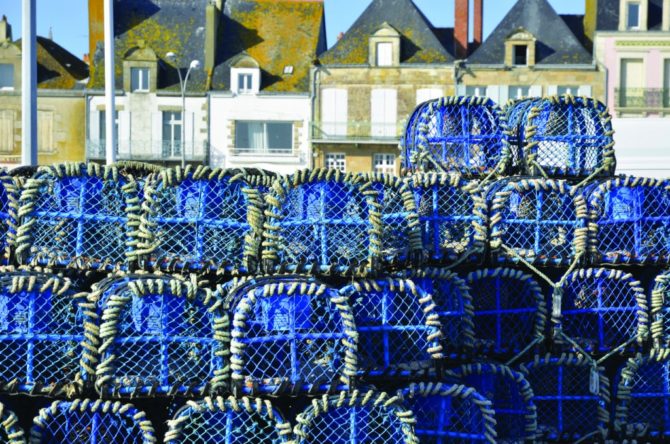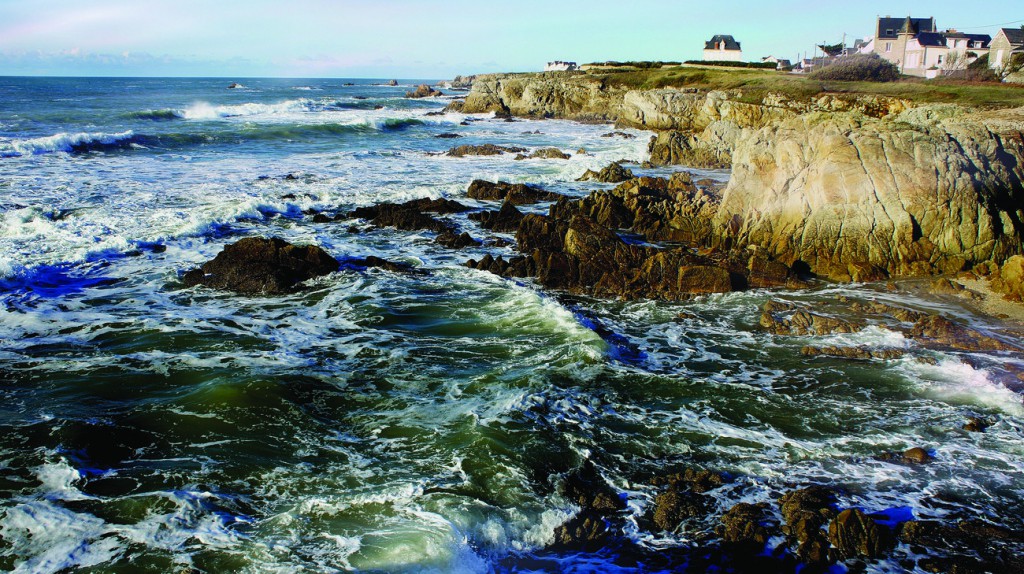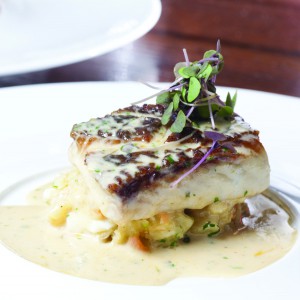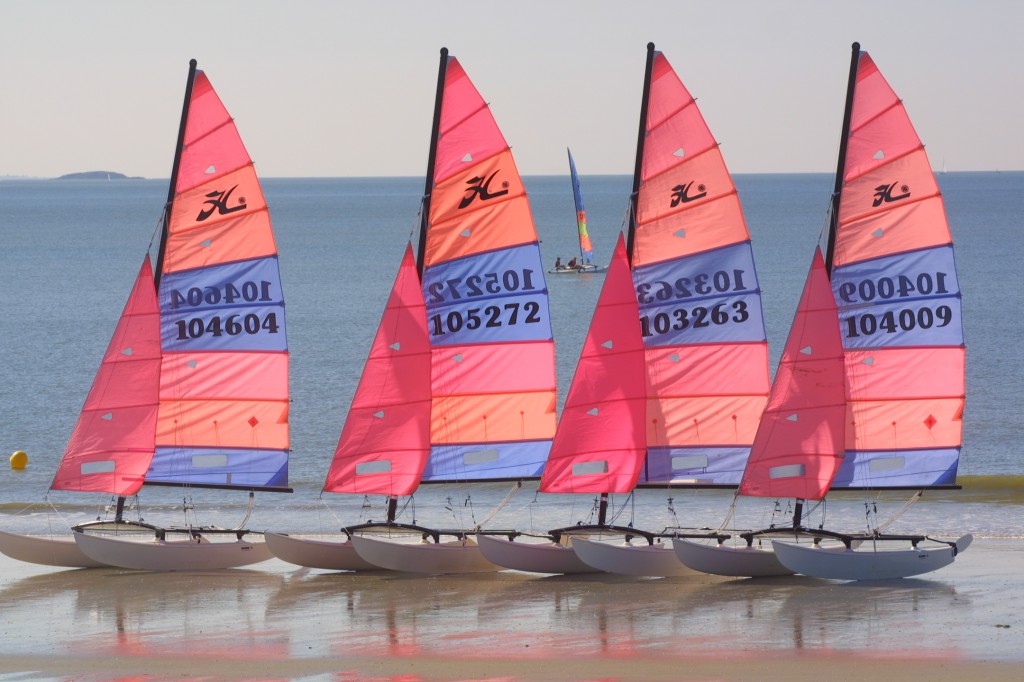Go West… to the Romantic Côte d’Amour

Flecks of white-gold sunlight glint across the seawater’s surface as it gently laps against the stone wharf, languidly nudging Le Croisic out of its early-morning slumber. Quayside cafés begin their daily ritual: baskets of crusty baguettes and croissants are tossed onto chequered-cloth table tops, next to espresso cups and newspapers ruffled by the salty breeze, occasionally attempting escape when a stronger wind momentarily sweeps across the harbour. Bronzed holidaymakers emerge for a drawn-out pétit dejeuner and a seafront stroll, to greet another sun-kissed, blissfully carefree day.
You’d never know it, but this harbour town has been up since the crack of dawn, its age-old fishing trade running the show as it has for centuries. Day breaks to the sight of paint-peeled fishing boats hauling nets teeming with cockles, langoustines, clams and mussels onto the pier, to be almost immediately sold at auction in the nearby market hall. Traders and restaurateurs travel from all across the region to bargain over trays of glossy mackerel and coral-coloured crabs still tentatively waving their tiny claws.
Until the development of the region’s train lines in the late 19th century, the coast of the north-western area of the Pays de la Loire consisted of two ancient fishing ports, only connected by a nine-kilometre curve of golden sand now known as the Bay of la Baule – or the Côte d’Amour. The late 1800s saw growth spurts for La Baule and Pornichet, with the coast acquiring its nickname from a local newspaper in 1913. Its romantic appeal was cemented by the area’s rapid development as a holiday destination throughout the 1920s and, several decades later, a boom in holiday home construction during the 1960s. This south-facing, sheltered bay still claims the title of one of the world’s most beautiful beaches, despite the flurry of apartment buildings that have sprung up here in recent years. The bay’s northernmost point evolves into the Côte Sauvage – the wild coast – where the sheltered cove gives way to an unbridled, jagged coastline. This coast flanks the romantic fishing port Le Croisic, where the faded blue shutters and painted timber frames of 17th-century stone houses echo the azure sea and sky.

A walk on the wild side
Following a leisurely morning in Le Croisic, I set off south towards the Côte d’Amour via the equally romantic Côte Sauvage. Exposed and weatherworn, this consists of a series of rocky inlets, hidden creeks and secret white-sand coves, protected by rock faces which are relentlessly battered by the frothy Atlantic Ocean. Marine birds congregate on flat, sun-baked rocks, occasionally taking to the sky to skim the ocean’s surface for prey. With the sun beating down on grassy dunes of wild flowers and the ocean’s salty perfume carried on the wind, this is an untamed, invigorating paradise. There’s a particular kind of light here found only on the Western coast – intense white sunbeams bounce off the sand and rocks, creating a haze of bright light which illuminates the landscape.
 A brisk walk along this weather-beaten coastline, even on a mild spring morning bathed in sunshine, is guaranteed to work up an appetite. Luckily, this stretch of ocean offers a seemingly infinite source of fish – in such abundance that it has spawned a seafood-heavy cuisine which combines the rich staple of the Breton diet, beurre salé, with the incredible freshness of newly harvested ingredients. Known as France’s kitchen garden, the Pays de la Loire also prides itself on its vegetable farming. It only takes one mouthful of baked, salt-crusted sea bass, balanced on a bed of wilted spinach and new potatoes, slathered in an impossibly creamy beurre blanc sauce, to fall in love. Match it with a glass of local Muscadet wine, which is crisp enough to cut through the richness of the butter, yet with fruity undertones to subtly bring out the fish’s delicate flavours. The wild coast is dotted with sea-view bistrots where you can wriggle your toes into soft sand as you indulge your taste buds.
A brisk walk along this weather-beaten coastline, even on a mild spring morning bathed in sunshine, is guaranteed to work up an appetite. Luckily, this stretch of ocean offers a seemingly infinite source of fish – in such abundance that it has spawned a seafood-heavy cuisine which combines the rich staple of the Breton diet, beurre salé, with the incredible freshness of newly harvested ingredients. Known as France’s kitchen garden, the Pays de la Loire also prides itself on its vegetable farming. It only takes one mouthful of baked, salt-crusted sea bass, balanced on a bed of wilted spinach and new potatoes, slathered in an impossibly creamy beurre blanc sauce, to fall in love. Match it with a glass of local Muscadet wine, which is crisp enough to cut through the richness of the butter, yet with fruity undertones to subtly bring out the fish’s delicate flavours. The wild coast is dotted with sea-view bistrots where you can wriggle your toes into soft sand as you indulge your taste buds.
Back to the Belle Époque
Heading south along the curve of the bay soon leads us to the soul of the Côte d’Amour, the 19th-century seaside resort of La Baule. Identifying its style as ‘casual chic’, this is still the place to be seen – Nicolas Sarkozy, I’m told, is often found at La Baule’s most grandiose hotel, L’Hermitage, which is only separated from the beach by a tree-lined promenade. This imposing building is the first of countless architectural gems hailing from the Belle Époque era, veiled behind the initial line of modern seafront apartments. I take a cycling tour of the town’s peaceful residential streets, which are lined with towering pine trees and an eclectic mix of villas. Built in brick and with decorative timber features painted in dark red or blue, these buildings reflect the region’s history, with alternating Breton, Basque and Norman influences.
At the turn of the 20th century, naturalists advocated the health benefits of spending time in the countryside, partly to counteract the industrial revolution, which was causing the cities of France to be shrouded in smog. This idea grew in popularity as the emerging middle classes began to take holidays outside of Paris. The villas of La Baule exemplify this trend, with their south-facing bay windows, sun terraces and gardens thick with undergrowth. They reflect the town’s status as a ‘garden city’, one which merges as closely as is possible into its lush surroundings. Cycling back to the seafront, I’m greeted by a pack of horses cantering across the sand, to paddle in the surf, which splashes up at the ankles of their riders. This is the archetypal image of La Baule, where hedonistic pleasure meets top-class sport – international show jumping, polo and golfing competitions take place here each year. This combination is the secret to this town’s art de vivre – after a round of golf or beach yoga, you can treat yourself to some thalassotherapy – a local spa treatment which uses sea water and marine minerals.

Sundown in Pornichet
The most family-oriented of these three resorts, Pornichet boasts six children’s clubs, offering beach volleyball, rollerblading, sailing and many more activities. During the summer months you’ll find that beachfront sports, concerts, open-air theatre and festivals taking place almost every day of the week, attracting swarms of locals and tourists alike. I arrive in Pornichet as the sun begins to set, the warm embers of the day staining the sky a glowing orange. Children still crouch in the sand on the Plage de Pornichet, hurrying to complete their last sand castle of the day, or dancing amid the incoming tide as their parents descend upon beach restaurants for sundown suppers. Settling in at the stylish La Signature, one of the best seafront restaurants in town, I relish yet another feast. King prawn beignets and grilled shellfish skewers only enhance the near-perfect sunset as we sit bathed in golden light, watching the waves lap the shore.
From its wild and rocky coast to the pleasure-seeking Bay of La Baule, this area has every ingredient required for an idyllic holiday. Traditional trade and historic architecture work in perfect harmony with the modern pursuits which make this such a vibrant destination. And if it’s romance you desire, the heavenly Côte d’Amour lives up to its name.
Share to: Facebook Twitter LinkedIn Email
Leave a reply
Your email address will not be published. Required fields are marked *



